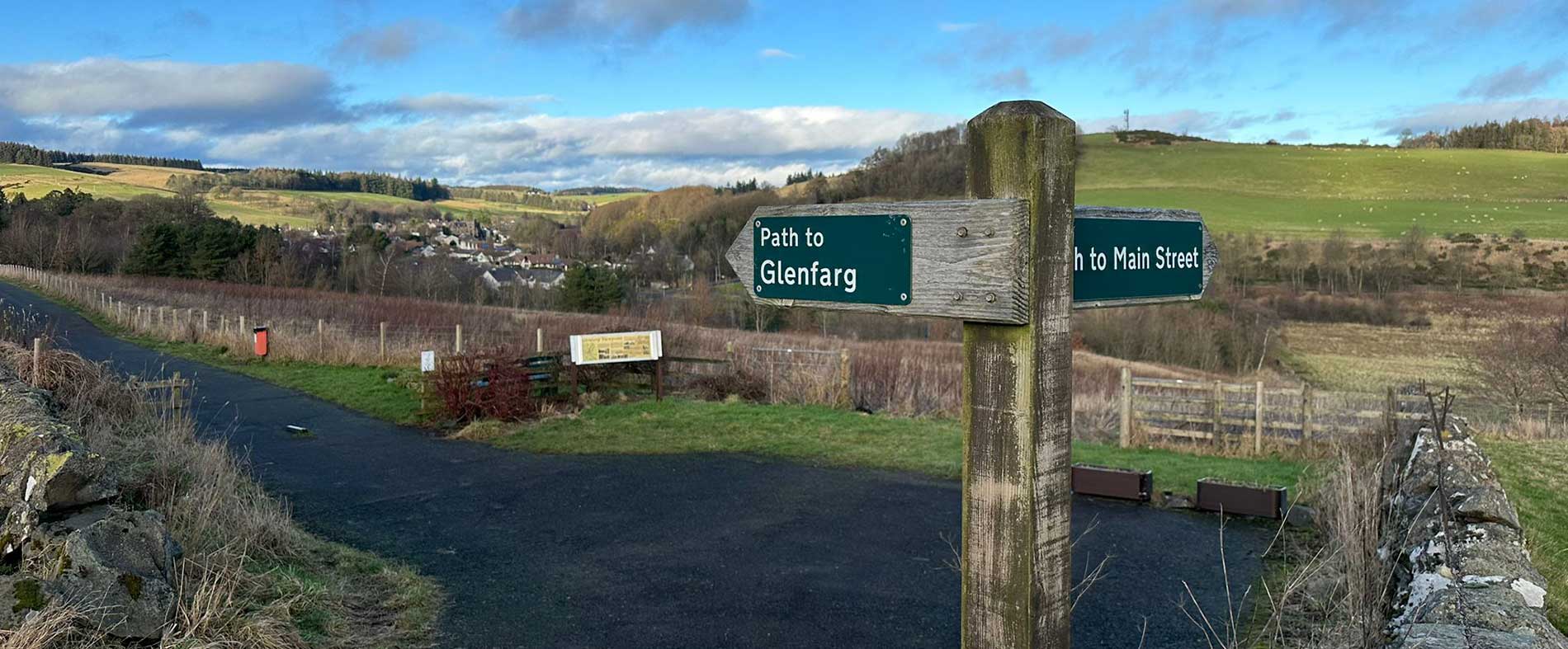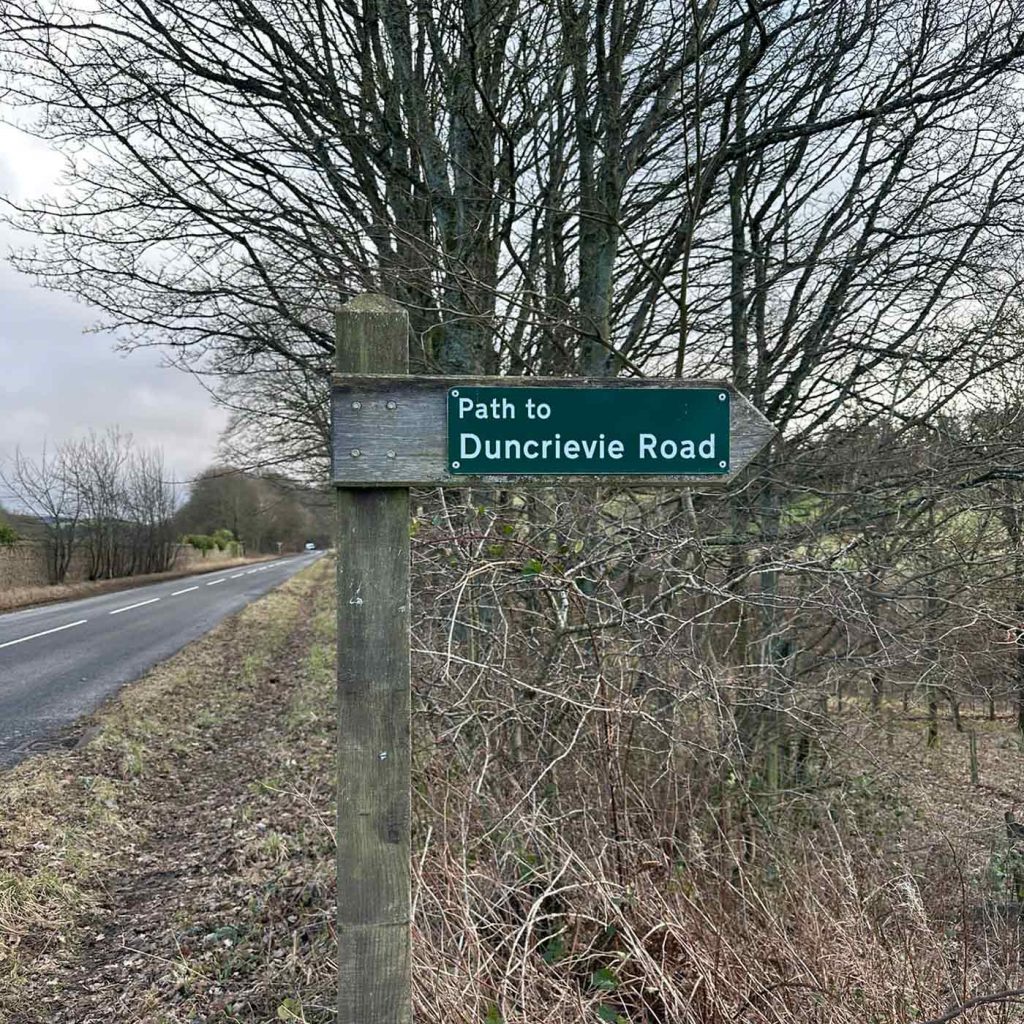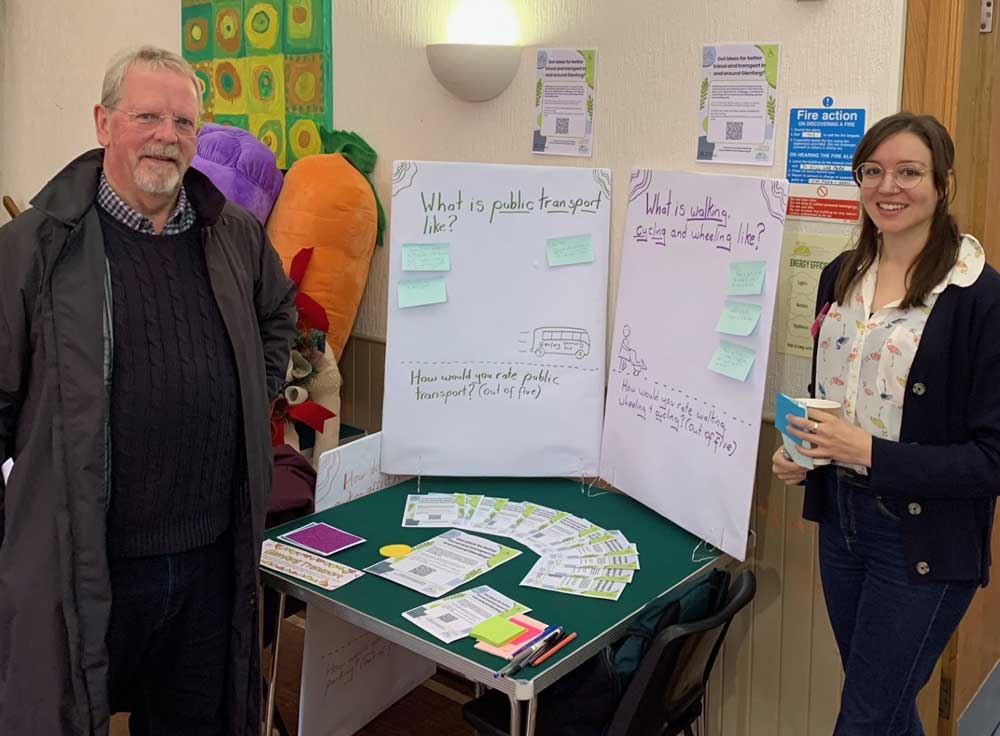
Glenfarg Walking Routes
& Information on Active Travel
The Glenfarg Path Network
There are 4 paths to be explored, starting and finishing in the village, ranging in length:
The Green Route – Duncrievie Circular – is the shortest, mostly on minor roads or good paths. At 4km, it takes one-hour walking or 30 minutes cycling
The Blue Route – Balcanqual Circular – is the second shortest and is on mostly minor roads, good paths, and open countryside. At 10km, it takes 2.5 hours walking or one hour cycling.
The Red Route – Lochelbank and Dron Hill – is the second longest and includes hill tracks, rough terrain as well as minor roads and paths. At 14km it takes 3.5 hours to walk or 2 hours cycling.
The Purple Route – the Reservoir Circular – is the longest of the four circuits and includes hill tracks and rough and moderately steep terrain. At 15 km it takes 4 hours walking or 2.5 hours cycling.
All offer impressive views and fresh country air. On a Thursday, start by paying a visit to the weekly Coffee Lounge, then walk off the home baking. The 55 Bus is a convenient way to get to the village from both Kinross Park & Ride and Perth interchanges. Follow this link to a downloadable and printable leaflet and map.
The Glenfarg Tunnels – Bus & Walk
Just north of Glenfarg is a not very well-kept secret. The old, abandoned railway line that once ran from Edinburgh to Perth runs through the Glen, passing over viaducts and passing through two tunnels – a masterpiece of Victorian engineering. There is very little parking and the road to the tunnels is not walking friendly. However, it is now easily accessible by taking our hourly 55 bus service from Kinross, Glenfarg or Perth. We will drop you at a convenient and safe spot where you can join the old track bed and make your way through the tunnels. A brisk 50-minute walk over the viaducts and through the two bending tunnels or take an extra hour for a more leisurely walk, and drop down to the main road at Aberargie, where we will pick you up. We can drop you at the Famous Bein Inn for coffee or lunch – or indeed for the intrepid, there is a track from the halfway point that takes you down to the Inn (a few hundred yards on the road). Or you can choose to return to the starting drop-off point for pick-up. You will need walking boots and a good torch to get the best out of the walk.
When you get on the bus tell the driver you are doing the tunnels walk and he/she will look after you – See the TImetable page here
Kinross Park & Ride 45
Glenfarg northwards 05
Glenfarg Tunnels northwards 08
Bein Inn 10
Aberargie northwards 14
Depart Perth Bus Station
Perth Mill St 45
Aberargie Southwards 01
Bein Inn 05
Glenfarg Tunnels Southwards 07
Glenfarg 10
Kinross Park & Ride arrive 30




Active travel…
means making journeys physically active – like walking or “wheeling” – which includes cycling, e-biking, scootering, and using a wheelchair.
Glenfarg benefits from its location in the Ochil Hills with several marked walks around the village and has National Cycle Route 775 running through the village. We aim to make active travel the natural choice for shorter journeys in and around Glenfarg.
By supporting more people in Glenfarg to walk, wheel, and cycle for everyday short journeys, we will improve health, create a safer community, and reduce our environmental impacts.
In 2019 seventeen percent of journeys in Scotland were under 1 km, and more than half (54%) were under 5 km – these shorter trips offer a real opportunity for a significant shift to active travel.
In 2023-24, Genfarg will partner with Planning Aid Scotland to develop a plan for Active and Sustainable Travel.
The role of walking
Walking is key to getting more people to choose to not use a car, it is by far the most likely mode of active travel. It is free, no equipment is required, and it is ideal for shorter trips. Walking also forms an important part of public transport journeys – walking to and from buses, trams and trains.
The positive impact of increased active travel
- Reduced congestion – enabling people to choose active or sustainable travel will reduce road congestion.
- Reduced air pollution – fewer car-driven journeys and more walking, wheeling, cycling, and public transport are important in tackling air pollution and its negative health impacts. As well as being a part of the solution, active travel becomes more pleasant and therefore more likely to be adopted as air quality improves.
- Higher quality public realm – Improving opportunities to walk will create places and communities that are more able to adapt and be vibrant, creative, enterprising, and accessible.
- Better physical, mental, and social health – Active travel has clear health benefits as physical activity increases, social connections are made and mental health is boosted by activity and time outdoors in nature. Active travel is an important opportunity for savings in preventing ill health.
- Reducing carbon emissions and helping reach net-zero carbon goals – Changing to active travel can have significant lifecycle carbon emissions benefits. The largest benefits come from shifts from cars to active travel for business, social, and commuting journeys.
- Economic growth and vibrant communities – Investing in infrastructure and support for active travel can increase economic growth and vibrancy. Those walking, wheeling, and cycling tend to spend more money locally than drivers. Increasing active travel can stimulate economic growth in urban areas and benefit local shops.
- It is inclusive and reduces inequalities – Accessible walking, wheeling, cycling, and good public transport links can reduce inequalities by giving equal access to employment, education, and other services.
In 2023/24 Glenfarg Community Transport Group has partnered with PAS to develop an Accessible and Sustainable Transport Plan.
